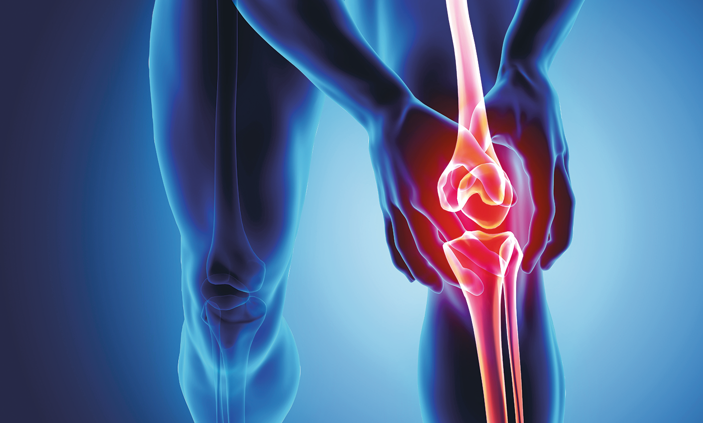Study Suggests New Breakthrough Could Change Arthritis Treatment
Wellness June 11, 2025 Hannah Lamarque
We all know how devastating arthritis can be. All the old things that seemed so simple now cause pain. Just getting up out of your chair or cutting an apple can be a difficult task. The one positive is that we are living in a time of rapid medical treatment development across the board. Right now, somewhere in the world, scientists are working on new treatments and therapies for arthritis. We’ve put together some of the latest studies and treatments for you below, but first let’s dive into what arthritis really is and the root causes.
[searchCTA,4]

Rheumatoid arthritis (RA) is an autoimmune disease in which the body’s immune system – which normally protects its health by attacking foreign substances like bacteria and viruses – mistakenly attacks the joints. This creates inflammation that causes the tissue that lines the inside of joints (the synovium) to thicken, resulting in swelling and pain in and around the joints. The synovium makes a fluid that lubricates joints and helps them move smoothly.
About 27 million people in the United States have rheumatoid arthritis (RA). Nearly three times as many women have the disease as men. In women, RA most commonly begins between ages 30 and 60.
In the early stages, people with RA may not initially see redness or swelling in the joints, but they may experience tenderness and pain.
These following joint symptoms are clues to RA:
Joint pain, tenderness, swelling or stiffness for six weeks or longer
– Morning stiffness for 30 minutes or longer
– More than one joint is affected
– Small joints (wrists, certain joints of the hands and feet) are affected
– The same joints on both sides of the body are affected
– Along with pain, many people experience fatigue, loss of appetite and a low-grade fever.
Typically, rheumatoid arthritis starts in one area of the body, then expands into other areas over time. RA is progressive, which means it worsens over time if it’s left untreated.
If you’re wondering how to spot the symptoms of RA, you’ll want to look for morning joint stiffness. This stiffness can be relieved with muscle movements — essentially, the pain can disappear once you start moving. Over time, RA symptoms worsen as joint damage occurs, like tendon erosion and reduced range of motion.
[searchCTA,1]
The goals of rheumatoid arthritis (RA) treatment are to:
Stop inflammation (put the disease in remission)
– Relieve symptoms
– Prevent joint and organ damage
– Improve physical function and overall well-being
– Reduce long-term complications
– To meet these goals, the doctor will follow these strategies:
Medication is one of the most popular treatment options. There are different drugs used in the treatment of rheumatoid arthritis. Some are used primarily to ease the symptoms of RA; others are used to slow or stop the course of the disease and to inhibit structural damage:
Nonsteroidal anti-inflammatory drugs (NSAIDs): Available both over-the-counter and by prescription, NSAIDs can help RA pain and inflammation. They can also reduce joint swelling.
Corticosteroids: These anti-inflammatory medications are fast-acting, and they can control inflammation and pain,
Golimumab (Simponi), is the last biological medicine to be approved for the treatment of rheumatoid arthritis, psoriatic arthritis and ankylosing spondylitis, conditions in which the immune system attacks the joints causing pain, stiffness and movement restrictions.
Keele University has released a study linking antibiotic use to rheumatoid arthritis: The odds of developing RA were 60% higher in those exposed to antibiotics than in those not exposed (OR 1.60; 95% CI 1.51–1.68). A dose- or frequency-dependent association was observed between the number of previous antibiotic prescriptions and RA. All classes of antibiotics were associated with higher odds of RA, with bactericidal antibiotics carrying higher risk than bacteriostatic (45% vs. 31%).
FDA officials noted that golimumab, a subcutaneous injection administered once a month, should be used alone or in combination with methotrexate for cases of moderate to severe RA or together with methotrexate cases of active psoriatic arthritis or ankylosing spondylitis.
The tests have shown that this ha is the newest and most effective treatment to fight arthritis! For more information about this treatment, follow the next step!
For people with RA, exercise is so beneficial it’s considered the main part of RA treatment. The exercise program should emphasize low-impact aerobics, muscle strengthening, and flexibility.
Heat treatments, such as heat pads or warm baths, tend to work best for soothing stiff joints and tired muscles. Cold is best for acute pain. It can numb painful areas and reduce inflammation.
In order to maintain your health, you’ll want to be informed about the latest rheumatoid arthritis treatments. As increasingly more advances occur, you may be able to better manage your symptoms. Make sure you stay informed and talk to your doctor about the latest available medications, treatment options, and pain management methods. Being knowledgeable can reduce your pain and help you stay active, even with RA. Find out more about the new
[searchCTA,1]